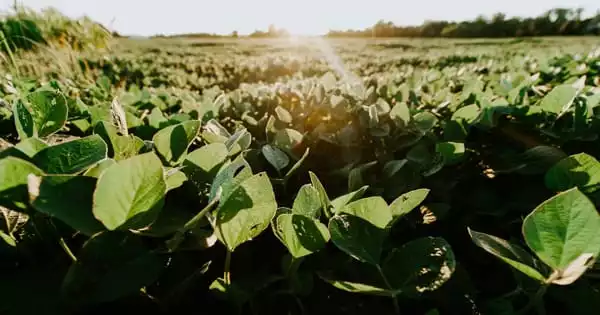A group of researchers uncovered a flaw in how Rubisco works in cowpeas and how they can fix it across crops to boost yield. All of the carbon in our bodies, food, and the biosphere comes from the assimilation of carbon dioxide in photosynthesis by a single enzyme known as Rubisco. This protein is the most prevalent in the world, which is not unexpected given its importance. Lancaster University researchers trying to boost the sustainable production of vital crops in Sub-Saharan Africa have uncovered a new flaw in the way Rubisco acts in cowpea, which they believe is shared by other crops.
“Rubisco is essential for photosynthesis and typically inhibits carbon uptake in crop plants,” explained Elizabete Carmo-Silva, a crop physiology professor at Lancaster. “Rubisco’s activity is regulated by the leaves in response to the amount of sun radiation. We discovered, however, that this correction is imprecise, and that there is frequently a mismatch between how active Rubisco is and how much solar energy is available for photosynthesis.”
Cowpeas are grown throughout Africa due to their high protein content, but they are especially important in West Africa, where they are the most important source of vegetable protein. In a recent study published in Nature Plants, Carmo-Silva and Senior Research Associate Sam Taylor discovered that as cowpea leaves become shaded, the activity of the enzyme Rubisco decreases faster than previously thought.
Rubisco is essential for photosynthesis and typically inhibits carbon uptake in crop plants. Rubisco’s activity is regulated by the leaves in response to the amount of sun radiation. We discovered, however, that this correction is imprecise, and that there is frequently a mismatch between how active Rubisco is and how much solar energy is available for photosynthesis.
Professor Elizabete Carmo-Silva
This is significant because, as the sun moves across the sky above crops in farmers’ fields, leaves cast their neighbors from sunlight to shade and back again. When a darkened leaf returns to the sun, it takes several minutes for Rubisco activity to adjust to the new amount of solar energy, resulting in missed opportunities to convert that energy into sugars. It has been projected that summing together the effect of those lost minutes of production throughout a day will cost at least 20% of potential carbon dioxide intake.
“Photosynthetic responses are not immediate. When moving from shade to high light, leaves take a few minutes to adjust, and during those minutes, the leaf is not assimilating as much CO2 as it has light energy for, resulting in a significant loss “Carmo-Silva, who is leading this research for the Realizing Increased Photosynthetic Efficiency (RIPE) project, explained. “We set out to uncover differences among cowpea types that affect activation speed, in order to determine which ones are faster.”
This project is part of the international research project Realizing Increased Photosynthetic Efficiency (RIPE), which aims to increase global food production by developing food crops that convert the sun’s energy more efficiently into food, with funding from the United Kingdom’s Foreign, Commonwealth, and Development Office, the Foundation for Food and Agriculture Research, and the Bill and Melinda Gates Foundation.

The amount of carbon lost during the Rubisco process is determined not only by the speed with which Rubisco can be re-activated, but also by the starting point: Rubisco activity when sunlight returns. This component is controlled by the rate at which Rubisco deactivates naturally in the shade. The faster the deactivation, the greater the impact on carbon assimilation in farmers’ crops.
The researchers employed a high-throughput biochemical approach to demonstrate that cowpea leaves can be shaded for as little as five minutes before Rubisco activity declines, implying that even brief shading of leaves reduces the plant’s photosynthetic production.
“We’re not sure what the mechanism is from sun to shade that reduces Rubisco activation, but we’ve discovered that the process is fairly swift,” Taylor said. “If it was a slow process, you could go back into the sun several minutes after shade and there wouldn’t be much of a loss, but really, you just need to be in shade for minutes for the majority of that decline in activity to occur.”
Despite these obstacles, there are reasons to be hopeful. Only four different types of cowpea were measured out of the thousands of permutations, however the researchers did discover variances in the rate at which Rubisco deactivated. This raises the prospect of finding plants with significantly slower rates of Rubisco de-activation within the larger gene pool of cowpea. This would allow for focused breeding for cowpeas and possibly other crops, increasing yield by reducing the influence of the recently discovered flaw in Rubisco function.





